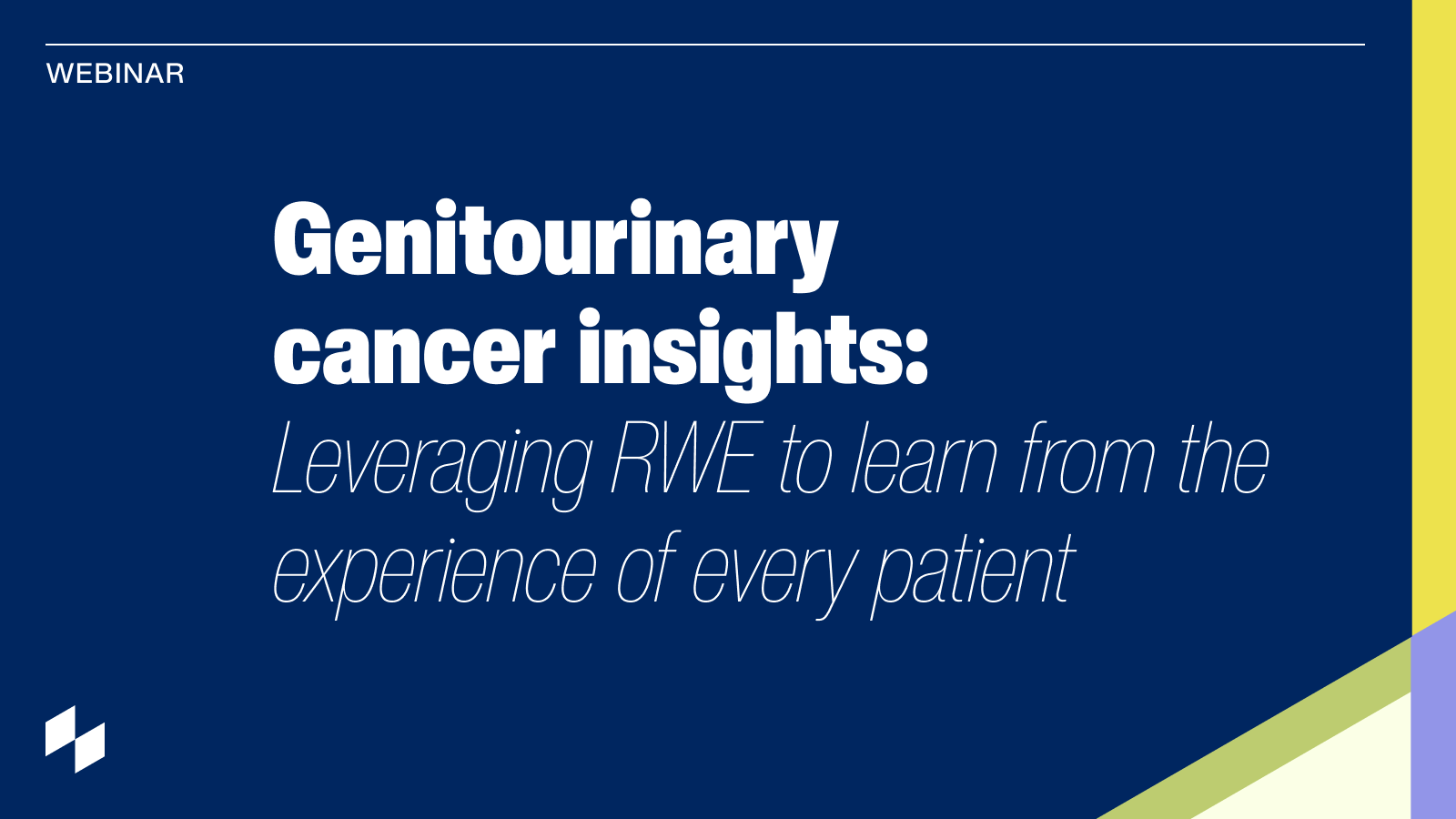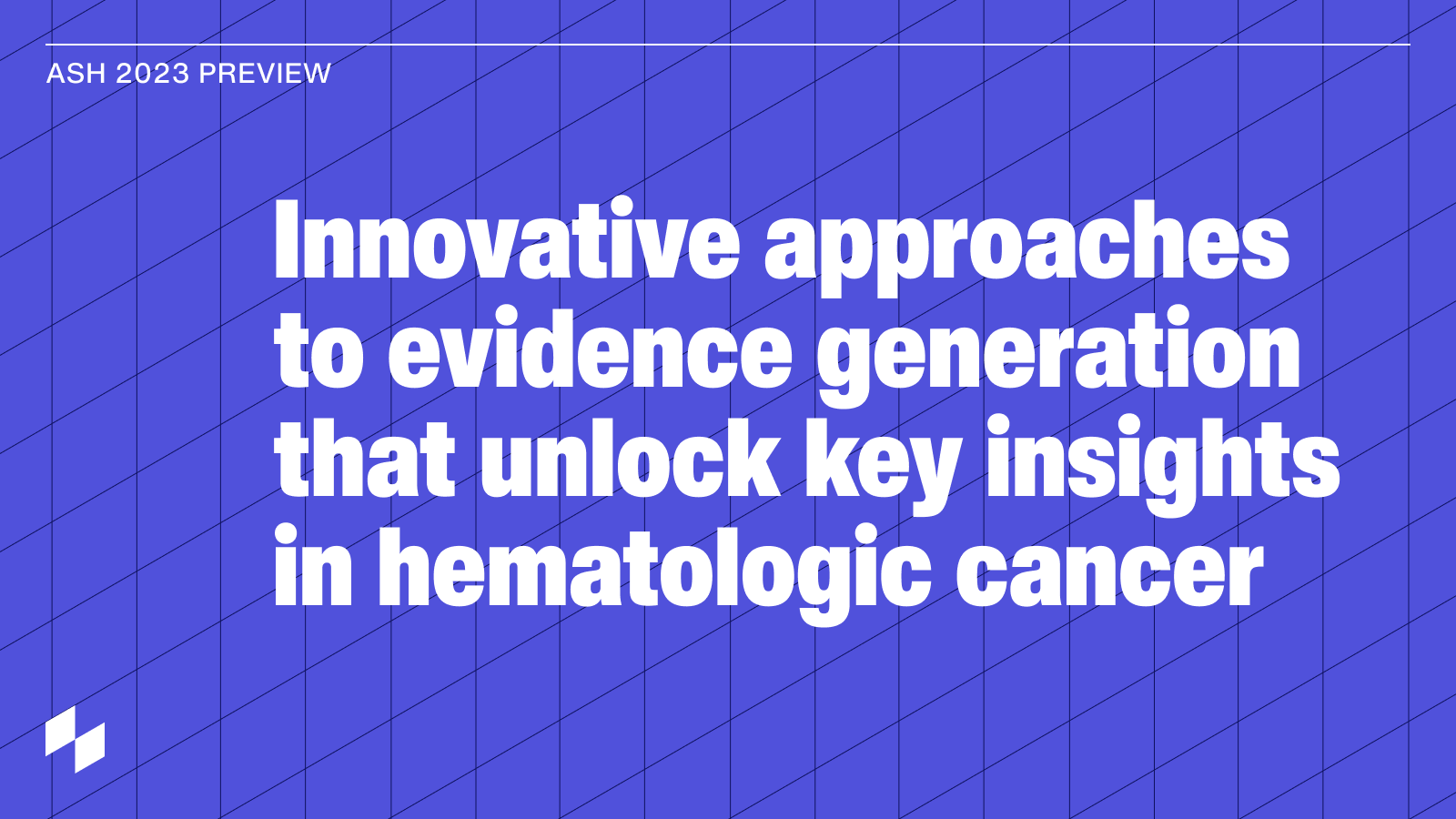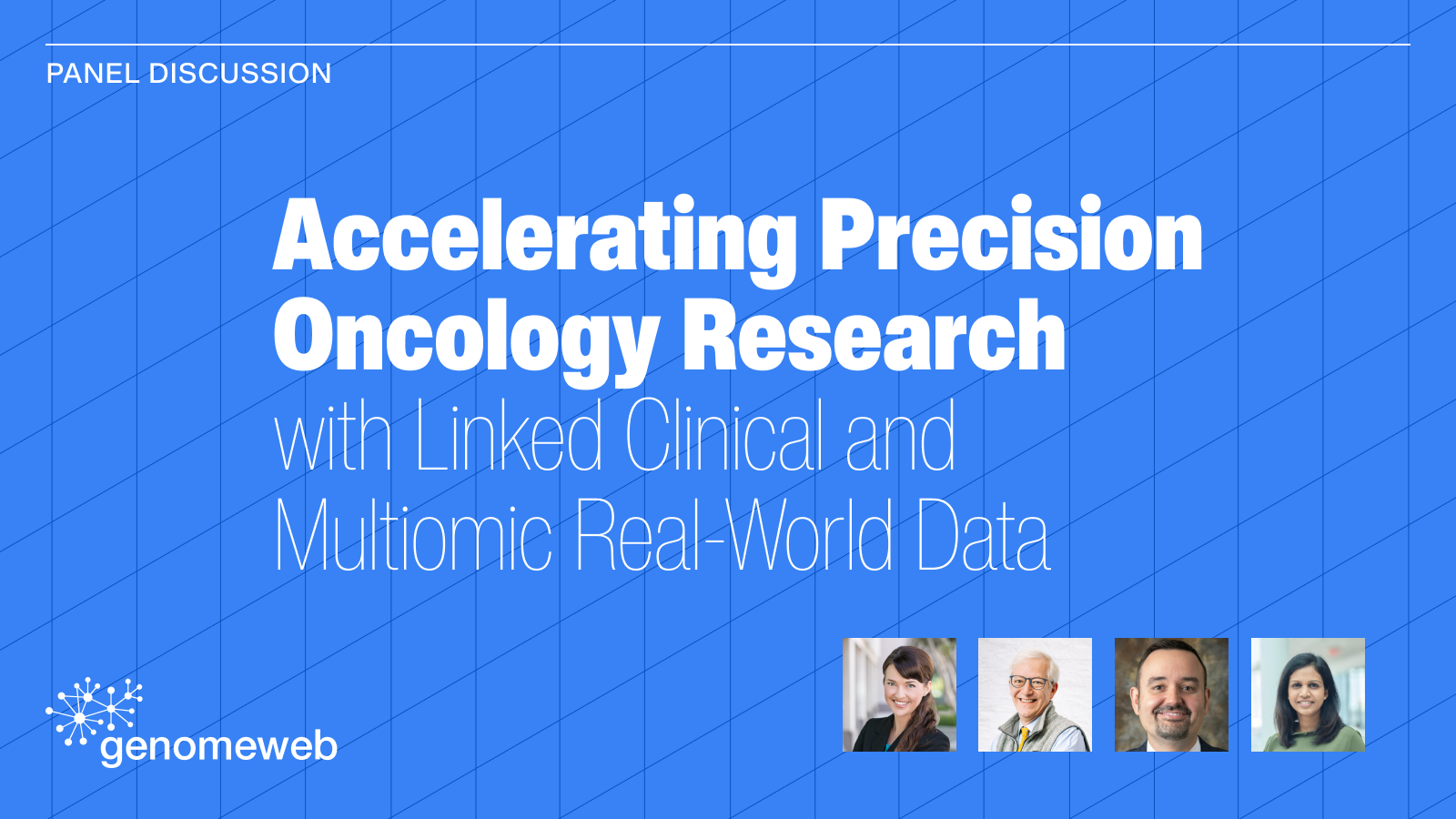This talk is part of the ResearchX session Opportunities to use EHR-derived RWE to inform HTA decision-making.
Sections include:
- Enhanced Cost-Effectiveness Analysis using EHR Data for Real-World Value
- Can Early U.S. Adoption of Cancer Drugs Inform HTA Decision-Making

Transcript
Danielle Bargo:
The next presentation is from Dr. Páll Jónsson at the National Institute for Health and Care Excellence. This presentation will focus on results from our first research project that we are conducting as part of our three-year research collaboration between Flatiron Health and NICE. The objective of our research collaboration is to explore the value of real-world evidence derived from electronic health records to inform the clinical and cost effectiveness of health technologies. Páll, the floor is yours.
Páll Jónsson:
Thank you, Danielle. It's great to be here today. Perhaps I should start with a little bit of context to this. NICE has recently published a new five-year strategy and within this strategy, there's a clear signal that NICE wants to make use of broader types of data to reduce the gaps in our knowledge and essentially being able to drive forward access to innovation for patients. We all know that the regulators, the payers, the HTAs, have traditionally been very reliant on randomized controlled trials and of course that's for a very good reason, but I feel it's absolutely important now to understand how we can make...
the most of the rich healthcare data that's being generated in practice. And we really need to understand how these data can help inform our decision making. So this is the context in which we're in now. So NICE sets out to be active in developing ways in which we can use RWE and data analytics to inform our work. And we're engaging with academics and data experts and research that aims to help us understand how we can make meaningful use of real-world data. And this work is one example of that. So just to start by acknowledging the contributors who contributed to this project. You can see those here. And this work is a starting point, Danielle, as you mentioned in understanding whether EHR data from different jurisdictions can help reduce uncertainty in HTA decision-making.
And this is really sparked off by the fact that the majority of drugs marketed both in the US and Europe are first launched in Europe–no, in the US of course. So we wanted to understand if, at least in principle, if EHR-derived real-world data could inform HTA on our side of the pond. So if we could have the next slide, please. So the typical journey of an oncology drug is an approval by the FDA followed by a marketing authorization in Europe. And then shortly after the marketing authorization, NICE receives a submission from manufacturers. And we will begin our appraisal, which then ends with a final appraisal determination, which then indicates whether the drug is approved for the use in the National Health Service. In some cases, if there are still outstanding evidence gaps after appraisal, the drug is then approved in the context of the Cancer Drugs Fund. The purpose of the Cancer Drugs Fund or the CDF is to enable early access to promising new drugs whilst at the same time enable further evidence collection that could help close the initial evidence gap. So that's the context to this. In this study, we've measured time from an FDA approval to EMA marketing authorization, really as a proxy for authorization in the UK. We also measured the time from FDA approval to manufacturer submission to NICE and the publication of NICE final guidance. And the drugs in scope, oncology drugs that had NICE approvals published between January, 2014 and December, 2019. And we then stratified the results by various parameters such as the therapy class, the cancer type and whether the drug had a biomarker driven indication and so on. And you can see that on the screen. In terms of the clinical data, we used data from Flatiron Health, EHR-derived data. And for the NICE data that we used the publicly available appraisal with documents for single technology appraisals.
In terms of outcomes, we evaluated the total number of patients exposed over time to oncology drugs approved by the FDA and EMA followed by a NICE appraisal. So if we could have the next slide, please. So here you can see the inclusion criteria. We selected a set of NICE technology appraisal of oncology drugs completed between, as I said, 2014 and 2019. We then whittled it down to 60 appraisals associated with 39 cancer drugs across 11 different cancer types. And if we move on to the next slide, please. And this is a breakdown of cancer types within our selection. As I said, we included 11 cancer types with the largest types being advanced non-small cell lung cancer. We had 16 appraisals in that category. Followed by advanced melanoma where we had 11 appraisals and then seven each of metastatic breast cancer and multiple myeloma. So we had a relatively broad group of cancers for this exercise. So the next slide, please.
So in terms of the results. So start with that. So this essentially shows us the journey from an FDA approval to publication of NICE guidance. And the timeline drive from the study now is as indicated here in months. So an FDA approval preceded EMA's approval by a median time of 5.3 months. We then had FDA approval preceded by submission to NICE by 6.4 months. And finally, an FDA approval proceeded to NICE publication by 18.5 months. And just to flag that, within these timelines there is quite a lot of heavy duty evidence review process and economic modeling followed by decision-making. So NICE's decisions are done by independent appraisal committees and is a consultative process. So we produce an initial document called Appraisal Consultation Document, which we then ask stakeholders to comment on before we review the final comments and make a final decision by committee again. But this partly explains why the process takes 12 months as you’ve seen in this example here.
And this represents the picture of the time period from 2014 to 2019, as I said, but the time lags are shorter in the second half of this period. So they're quicker by about 20%. And beyond this period that we studied, I know that the process now is even a little bit shorter today. So if we could have the next slide, please. So this is looking at uptake of drugs after FDA approval. So what we're looking at is the number of uses per drug in the EHR cohort. And as you would expect, the numbers increase with time. At the time of manufacturer submission to NICE, an average of 14 point... Sorry. An average of 147 real-world patients had received the drug of interest on label after FDA approval with a median of 4.5 months of followup time. This then increased to 269 patients, and 6.4 months of followup time at the time of NICE final guidance publication.
And if you look at this stratification according to subsequent NICE decisions, the average count in the US cohort were higher for products than NICE recommended for the Cancer Drugs Fund than the average counts for other decisions. So in essence, we have a greater accumulated follow-up for drugs that go into the managed access with evidence generation pathway process, if you like. Next slide, please. And now looking at split between treatment types. This shows the number of patients when NICE published its guidance. The black bars are the minimum and maximum patient counts. So as you can see, there's a great variation in numbers within each treatment type. But actually one insight we gained from looking at this is that the rate of patient accrual at Flatiron Health for drugs in the chemotherapy and in the immunotherapy classes appear to increase over time more so than in other classes. And the next, please. And finally, here we see the median follow-up time available in the data after the patient received the drug of interest. This slide shows stratification on the Y-axis by the number of months since FDA approval. And again, you can see a great variation. But if you recall, one of the earlier slides that showed the evidence submissions and the timeline is that the evidence submission to NICE comes around the six month mark. So there may be limited follow up at that time. However, for those drugs that go into the Cancer Drugs Fund, the CDF, for further evidence collection, the follow-up time is potentially towards the top two bars. So around six months and potentially much longer. And moving on to my final summary slide. So the time from FDA approval to NICE guidance, as we've seen, may provide an opportunity and provide additional information for HTA decision-makers based on real-world US patients.
There are opportunities to use this data, but that will vary, I think, by cancer type, the nature of the uncertainties that are identified in our appraisals. So these uncertainties are often longer term measures. As we've seen before, the audience thinks overall survival and progression-free survival is important. We often see sort of issues and uncertainty around those longer term outcomes, as well as quality of life outcomes. And other opportunities will depend on whether the data is reflective of the UK patient characteristics, the treatment settings, and the clinical pathways. We need to make sure that we're looking at apples and apples and pears and pears rather than a mix of things in different jurisdictions. And this really is indeed what the next steps will explore in this exercise. So the big question is, is the data appropriate in the decision making context of European HTA? And the last slide again is acknowledgement to the authors of this study. And thank you very much for your attention.


